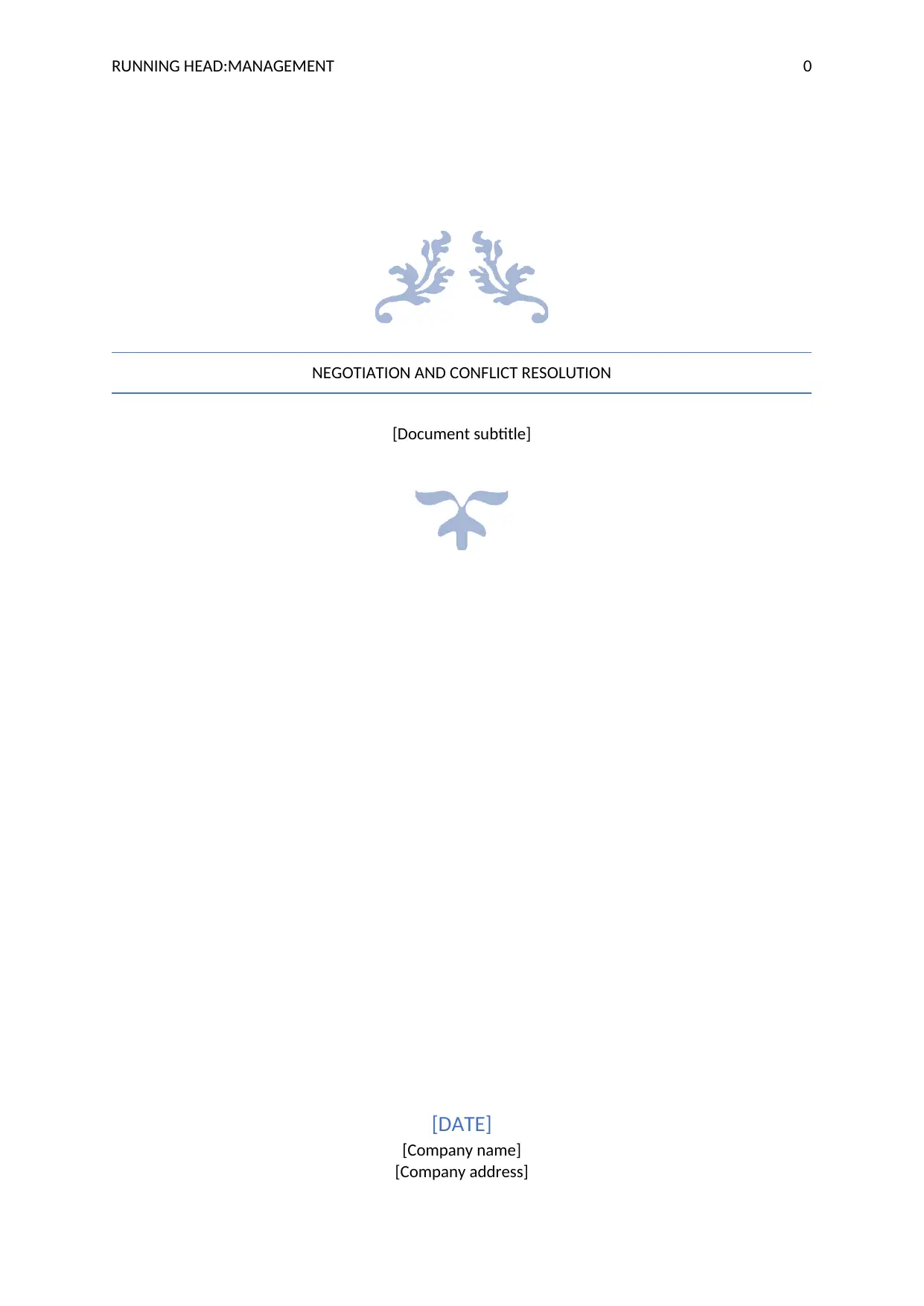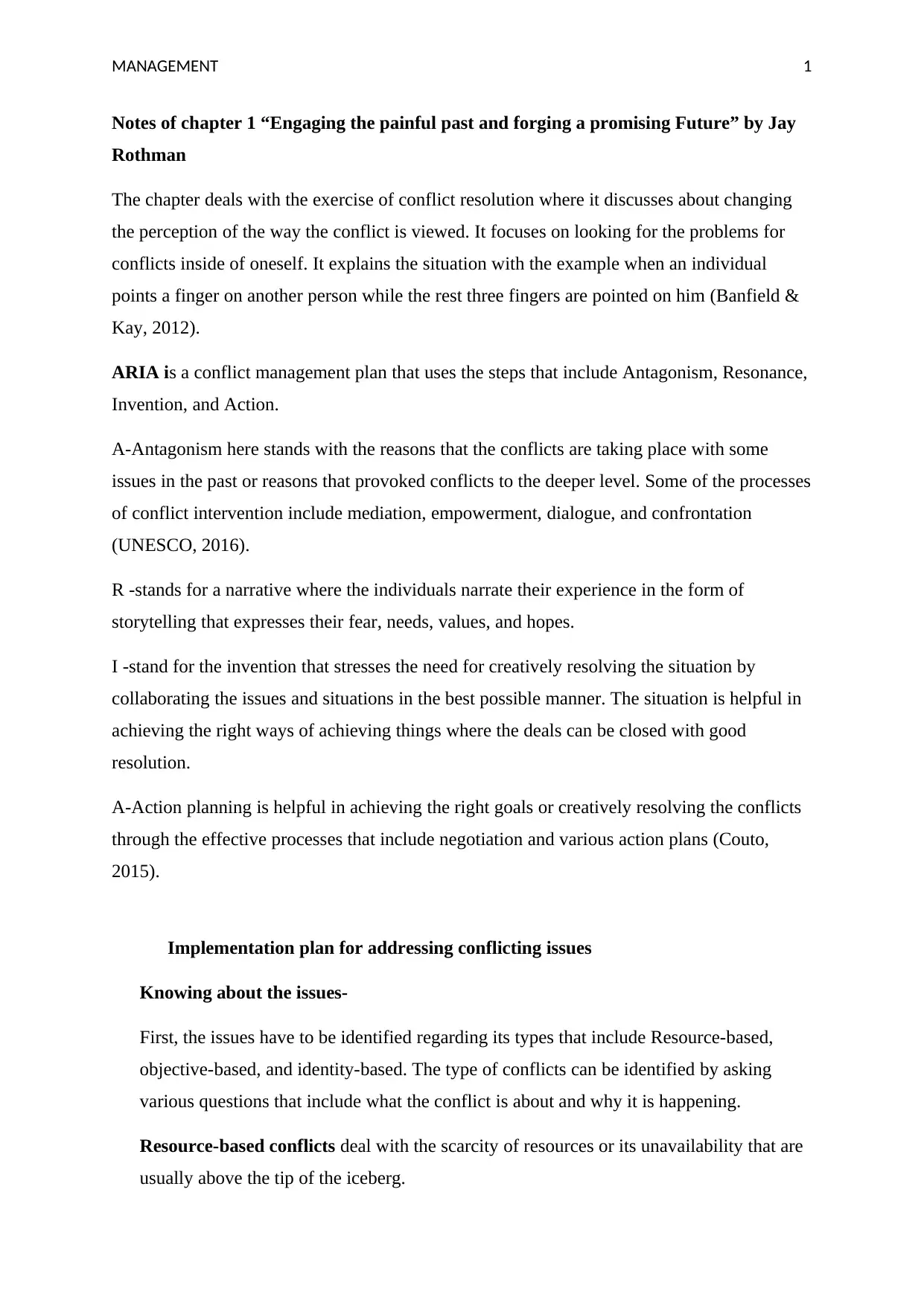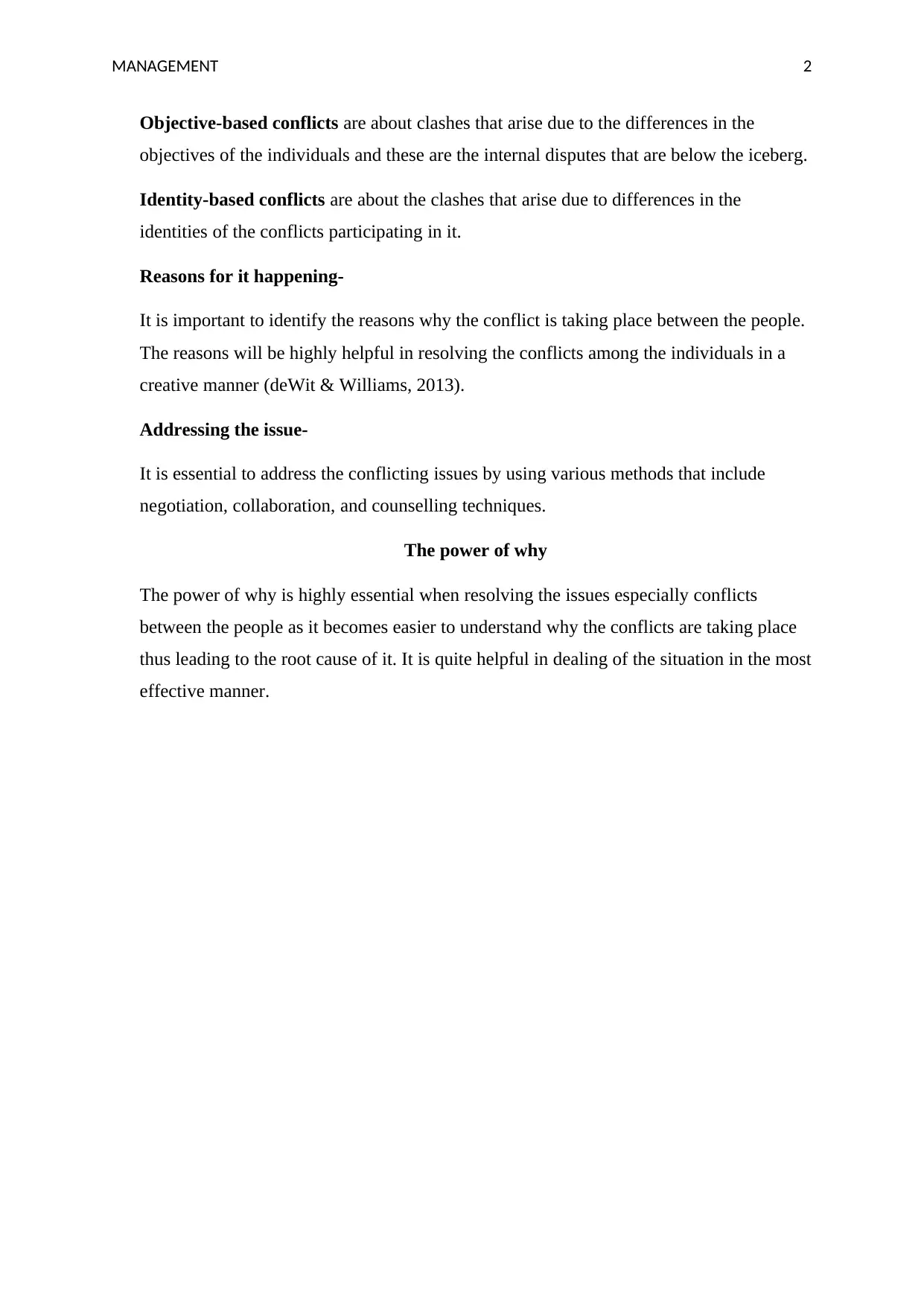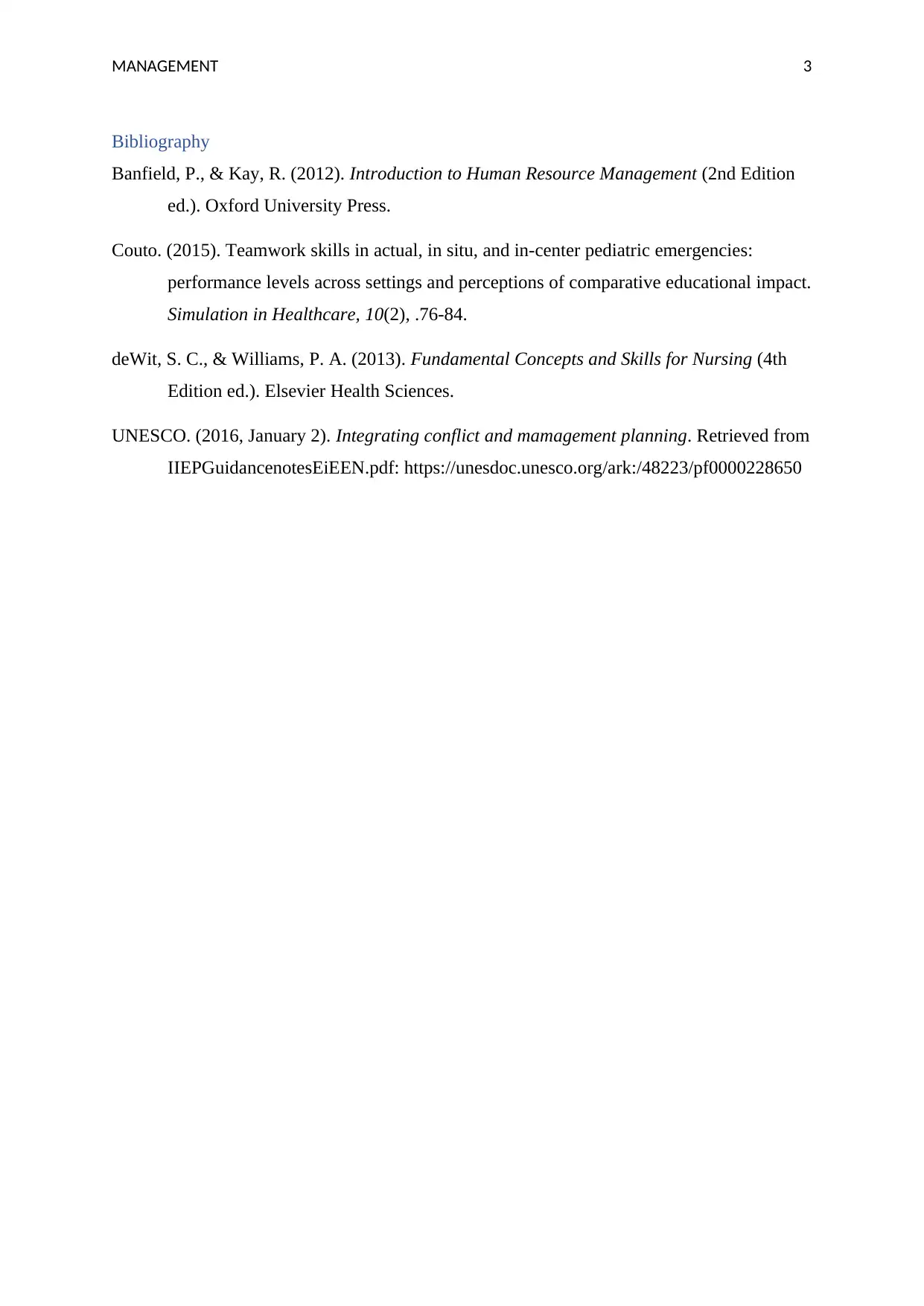Conflict Resolution and Management: A Detailed Report
VerifiedAdded on 2022/08/15
|4
|678
|18
Report
AI Summary
This report provides an overview of conflict resolution, focusing on Jay Rothman's chapter from the book series "From Identity-Based Conflict to Identity-Based Cooperation." It discusses the ARIA model (Antagonism, Resonance, Invention, Action) as a framework for managing conflicts, emphasizing changing perceptions and addressing internal issues. The report details the implementation plan for addressing conflicting issues by identifying different conflict types (resource-based, objective-based, and identity-based) and their underlying reasons. It highlights the importance of understanding the "power of why" in resolving conflicts and includes a bibliography of cited sources. This report offers valuable insights into effective conflict resolution strategies, essential for management and leadership.
1 out of 4






![[object Object]](/_next/static/media/star-bottom.7253800d.svg)